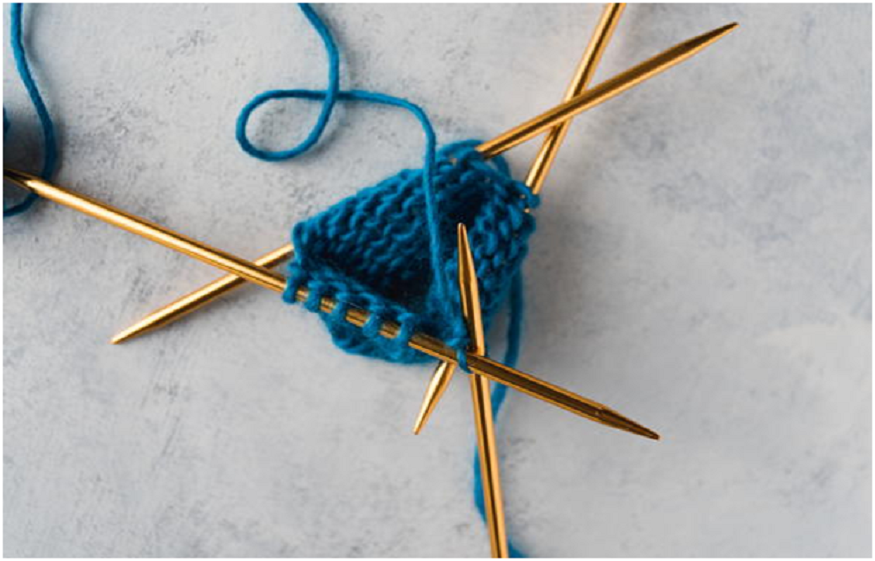Knitting is a wonderful craft that allows you to create beautiful and unique handmade items. Whether you are a beginner or an experienced knitter, having the right knitting tools can make a big difference in how enjoyable and successful your project will be. Choosing the correct tools can help you work efficiently, create neat stitches, and avoid frustration. This article will guide you through the important aspects of selecting the best knitting tools for your next handmade creation.
Understand the Basics of Knitting Tools
Before starting any knitting project, it is essential to know what tools are commonly used and what purpose they serve. The most basic knitting tools include knitting needles, yarn, stitch markers, scissors, and measuring tapes. Each tool has a specific role in helping you make your project look professional and stay on track. When selecting knitting tools, you should consider the type of project, your skill level, and your personal preferences.
Choose the Right Knitting Needles
Knitting needles are the heart of any knitting project. They come in various materials such as wood, metal, bamboo, and plastic. Each type offers different advantages. For example, wooden needles provide a warm and comfortable feel and are less slippery, making them great for beginners. Metal needles are smooth and allow for faster knitting but can be slippery, so they may be better for experienced knitters.
The size of the needles also matters. Needles come in various thicknesses, which affect the size of the stitches and the final look of your creation. Larger needles produce looser stitches and softer fabrics, while smaller needles make tighter stitches for denser and firmer items. Always check the recommended needle size on your yarn label and pattern instructions to ensure your project turns out as expected.
Selecting the Right Yarn to Match Your Tools
Your choice of yarn works hand-in-hand with your knitting tools. Yarn varies in thickness, texture, and fiber type. Different yarns require different needle sizes and types to achieve the best results. When buying knitting tools, it is helpful to pick needles that complement the yarn you plan to use. For example, delicate yarns need fine needles, while chunky yarns work better with thick needles.
Also, consider the fiber content of the yarn, such as wool, cotton, or acrylic. Some yarns are slippery and may require needles with more grip, while others might be sticky and work better with smooth needles. Taking these factors into account will improve your knitting experience and the quality of your finished piece.
Consider Specialized Knitting Tools for Complex Projects
If your handmade creation involves complex stitches or patterns, you may need specialized knitting tools. Tools like cable needles, stitch holders, and row counters can help you manage intricate designs and keep track of your progress. These tools are designed to make advanced knitting easier and more organized.
For instance, cable needles assist in creating twisted stitch patterns by temporarily holding stitches, while row counters help you remember how many rows you have completed. Having the right specialized knitting tools ensures you can take on challenging projects without losing track or making errors.
Comfort and Ergonomics Matter
Knitting can be a relaxing hobby, but it may also strain your hands and wrists if you use uncomfortable tools. When choosing knitting tools, especially needles, it’s important to consider how they feel in your hands. Lightweight needles with smooth finishes can reduce hand fatigue, allowing you to knit longer without discomfort.
Ergonomic knitting needles are designed with special shapes or grips to help reduce strain. These are especially helpful for people with arthritis or other hand issues. Investing in comfortable knitting tools can make a significant difference in your knitting sessions and help you enjoy the process more.
Budget and Quality: Finding the Right Balance
Knitting tools come in a wide range of prices, from very affordable sets to high-end professional-grade options. While it might be tempting to buy the cheapest tools, quality matters because good tools last longer and provide a better knitting experience. For example, poorly made needles may have rough edges that snag yarn or cause frustration.
Try to find a balance between budget and quality. Beginners might start with an affordable basic set and upgrade tools as they gain experience. Experienced knitters often invest in high-quality knitting tools that enhance their skills and produce better results.
Final Thoughts
Selecting the right knitting tools is an important step in creating handmade projects that you will love and be proud of. Knowing the different types of needles, matching your yarn properly, considering comfort, and being prepared for complex patterns will help you choose the tools that fit your needs best.
Remember that knitting is both an art and a craft, and having the proper knitting tools can make your creative journey smoother and more enjoyable. Whether you are making a cozy scarf, a detailed sweater, or a delicate baby blanket, the right tools will help you bring your vision to life with ease and confidence.





